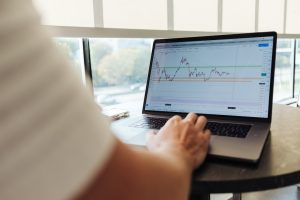Forex, short for foreign exchange, is the largest and most liquid financial market in the world. It operates 24 hours a day, five days a week, and has an estimated daily turnover of $6.6 trillion as of April 2019, according to the Bank for International Settlements (BIS). This article dives into the details of how much money is traded on forex and what factors influence its trading volume.
Forex Trading Volume
Forex trading volume refers to the total amount of money traded on the forex market during a specific period, usually a day or a week. It is the primary measure of the market’s liquidity, which is essential for traders to execute trades at the desired price without significant slippage. The higher the trading volume, the more liquid the market is, and the easier it is for traders to enter or exit a trade.
The forex market’s trading volume is mainly influenced by three factors: market participants, currency pairs, and market conditions.
Market Participants
The forex market is open to a wide range of participants, including banks, hedge funds, retail traders, corporations, central banks, and governments. Each of these players contributes to the market’s liquidity by buying or selling currencies based on their needs, objectives, and expectations.
For instance, banks trade currencies to facilitate international trade and investments, hedge funds and other institutional investors use forex as a speculative tool to generate returns, while retail traders use it for personal investments or hedging against currency risks.
Currency Pairs
The forex market consists of various currency pairs, each of which represents the exchange rate between two currencies. The most actively traded pairs are the USD/EUR, USD/JPY, GBP/USD, and USD/CHF, which account for approximately 70% of the market’s total trading volume, according to the BIS.
The volume of trading in each currency pair depends on various factors, such as the economic performance of the countries involved, political stability, interest rates, and market sentiment. For example, the USD/EUR pair may experience high trading volume during the European Central Bank’s monetary policy meetings or major economic releases from the US and Europe.
Market Conditions
The forex market’s trading volume also depends on market conditions, such as volatility, liquidity, and trading activity. Volatility refers to the rate at which the currency prices fluctuate, while liquidity is the ease of buying or selling currencies without affecting their prices significantly.
High volatility and liquidity often lead to high trading volume, as traders capitalize on the price movements to make profits. Trading activity, on the other hand, refers to the number of trades executed in the market, which can also affect the trading volume.
Factors Affecting Forex Trading Volume
Several factors affect the forex market’s trading volume, including economic indicators, geopolitical events, and central bank policies.
Economic Indicators
Economic indicators such as GDP, inflation, unemployment, and retail sales can significantly affect the forex market’s trading volume. These indicators provide insights into the health of the economy and the central bank’s monetary policy outlook, which can influence the currency prices.
For example, positive economic data from the US may lead to a surge in the USD’s demand, leading to a higher trading volume in the USD currency pairs. Similarly, weak economic data from Europe may lead to a decline in the EUR’s demand, leading to a lower trading volume in the EUR pairs.
Geopolitical Events
Geopolitical events such as wars, political crises, and natural disasters can also affect the forex market’s trading volume. These events can lead to increased uncertainty and risk in the market, leading to higher volatility and trading activity.
For example, the Brexit vote in 2016 led to a surge in the trading volume of the GBP pairs due to the uncertainty surrounding the UK’s economic and political future. Similarly, the US-China trade war in 2018 led to a surge in the trading volume of the USD/CNH pair due to the impact of the trade tensions on the global economy.
Central Bank Policies
Central bank policies such as interest rates, monetary stimulus, and quantitative easing can also affect the forex market’s trading volume. These policies can influence the currency prices by affecting the supply and demand of the currencies.
For example, a central bank may raise interest rates to combat inflation, which can lead to a higher demand for the currency, leading to a higher trading volume in the currency pairs. Similarly, a central bank may announce a quantitative easing program to stimulate the economy, which can lead to a lower demand for the currency, leading to a lower trading volume in the currency pairs.
Conclusion
In summary, the forex market’s trading volume is a critical indicator of its liquidity and efficiency. The market’s trading volume is influenced by various factors, including market participants, currency pairs, and market conditions. Traders should be aware of these factors and their impact on the market to make informed trading decisions.






